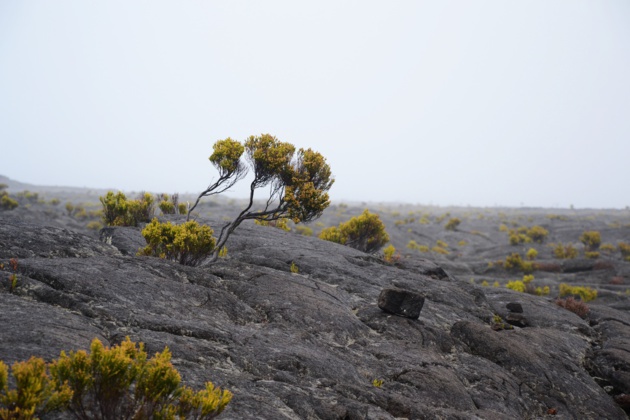
Credits Marie Pothin
If the decline of biodiversity and the depletion of our planet's resources are not new facts, they have now reached a critical threshold. This is what seems to announce the Living Planet Report, a biannual report by WWF in partnership with the Zoological Society of London and NGOs Global Footprint Network and the Water Footprint Network. Presented at the UNESCO on September 30, the report is based on three main indicators. However, it is the Living Planet Index (LPI), which measures changes in biodiversity from more than 10,000 groups of animals belonging to 3,038 vertebrate species, which leads to the most disturbing findings.
The disappearance of more than half of wildlife populations
Indeed, this is a decline of over 50% that was observed in populations of wild species between 1970 and 2010. A decline, which in just 40 years, is much higher than that estimated a few years back. However, this figure represents only an average. When looking more carefully, some species are critically declining: this is the case of freshwater species, whose population fell by 76%. Marine and terrestrial species are themselves doing “fine” with a fall of “only” 39%.
The Living Planet Report also reveals considerable geographical disparities. The most important losses of biodiversity are observed in the tropics and amount to 56%. More particularly, Latin America has lost more than 83% of its wild species’ populations.
The causes of this slaughter are numerous and well-known: degradation or disappearance of natural habitats, hunting, fishing and global warming.
The causes of this slaughter are numerous and well-known: degradation or disappearance of natural habitats, hunting, fishing and global warming.
It is here that the second indicator used by specialists intervenes: the ecological footprint, which measures the impact that every person has on the environment by calculating the earth's and maritime surface which one needs to live. It obviously includes the production of foods, but also consumer goods of any kind, daily and occasional travel, spaces necessary for the construction of housing, businesses and finally the waste that we produce. In 2010, Humanity has used one and a half Earth. The consequence: resources run out whereas waste and carbon accumulate.
Here again the report reveals major geographical disparities: Altogether, China, the US, India, Brazil and Russia represent nearly half of the world’s ecological footprint. However, if we consider the number of inhabitants of each country, it is quite a different ranking, which emerges: Kuwait, Qatar, United Arab Emirates, Denmark and Belgium are the big winners. In this ranking, France can boast to be only in the 23rd position... But with an ecological footprint widely superior to the world average (in reality, almost doubled).
The richest countries are the least affected
The third and last indicator of the Living Planet Report, the water imprint, allows the estimation of the volumes of fresh water and rainy water necessary for the world population. It reveals that, on the scale of the planet, the agricultural production represents 92 % of the global water imprint, far in front of the industrial production (4,4 %) and domestic usage (3,6 %). The biggest consumers of water are therefore the United States and China, whose production and exportation of agricultural and industrial goods consume most water.
While the richest countries are the ones that have the biggest impact on the environment, developing countries are the ones which are experiencing the most ecosystematic losses. The WWF report reminds us in capital letters that "Today, almost a billion individuals suffer from hunger, 768 millions live without healthy and clean water, and 1,4 billions are deprived of access to a reliable source of electricity."
An irreversible situation?
The situation seems already critical and it is expected to get worse. If the population has almost tripled since 1950, reaching 7 billion in 2011, we estimate it to reach about 10 billion in 2050. But for Philippe Germa, director of WWF France, we can avoid the worst: "Humanity can manage to disassociate its development from its ecological footprint. Hence it is necessary to protect the natural capital, in particular by stopping the over-exploitation of halieutic stocks, producing more efficiently, with fewer inputs and waste and more renewable energies, and reorienting the financial flows by taking into account the environmental and social costs ".




























